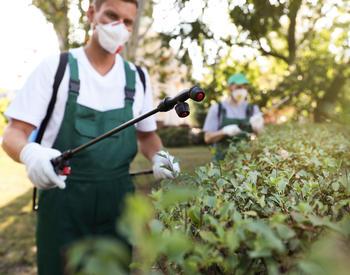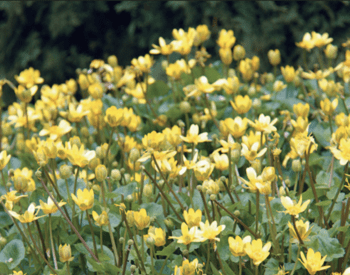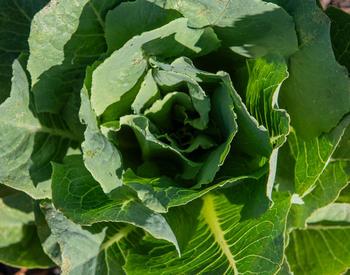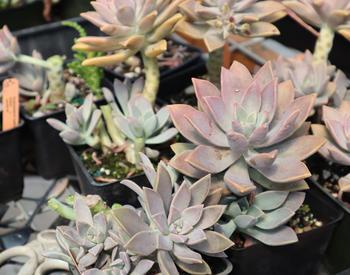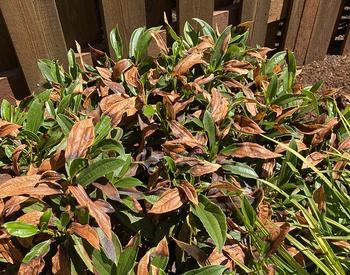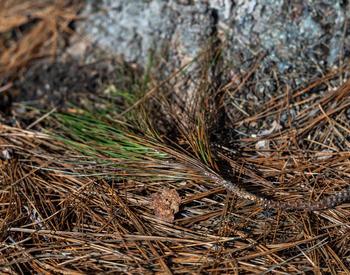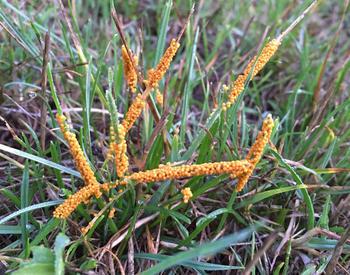One hidden benefit of gardening in the Klamath Basin is reduced disease pressure, a product of our low humidity. Standing water on leaf surfaces or prolonged, high relative humidity are often necessary for plant diseases to gain traction. By delivering water directly to the root system and avoiding wet leaves, the Klamath gardener can minimize the opportunity for disease in the garden. One exception is Verticillium wilt, a fungal disease common in Klamath Basin landscapes.
As is typical of a plant disease with a wide range of host plants, Verticillium doesn’t look the same in every type of plant material it infects. The two species of Verticillium, V. dahliae and V. albo-atrum (distinguishable from each other by lab tests), infect dozens of different types of plants. There are multiple strains of V. dahliae, considered to be more aggressive and more prevalent species. Because Verticillium can dwell in the soil, it can be very tough to manage — resistant plants and rotation to a different area are the most common management strategies.
There is no reliable chemical control of Verticillium, though soil fumigation works under some circumstances. Some mature trees can live for years with Verticillium — surviving but never thriving. By contrast, vegetables, such as potatoes and tomatoes, might limp along — or crash seemingly overnight.
The best way to confirm a diagnosis of Verticillium is through lab testing. However, there are some signs to look for that remain fairly consistent over a range of affected plants and may be helpful to the homeowner in determining whether Verticillium should be considered. All of these signs and symptoms can also be present with other disease issues — but several together, particularly on a plant known to be susceptible, would suggest Verticillium as the culprit. Lists of susceptible and resistant plants can be found here: Verticillium Wilt.
Uneven wilting
Verticillium can cause a single branch or group of branches on one side of a plant or tree to be significantly more stunted, yellowed or wilted than the healthy side. A vascular disease, Verticillium disrupts the circulation of water and nutrients to the extremities of the tree. Early in the disease progression, not all parts are affected equally. In a mature tree, there may be a noticeable difference with one section of the tree canopy looking “weak” but not observably diseased. On the “more obvious” end of the spectrum, some sections might look scorched, or, in some trees, leaves may fall off prematurely in section(s) of the tree while an adjacent area appears fine.
V is for Verticillium
On leaves, lesions caused by Verticillium often start off “V” shaped at the outer margin of the leaf. As the lesion progresses, the “V” can be harder to distinguish. These V lesions typically start on the lower portions of the plant, especially in tomatoes, peppers and potatoes.
Vascular discoloration
The “ring” of vascular bundles just under the bark of most plants is much like a series of straws or siphons moving water and nutrients through the plant. While Verticillium is not the only pathogen that causes discoloration in and around the vascular bundles, sacrificing a stem or two to look for this sign can provide helpful insight. For instance, the combination of “V lesions” and brown or discolored vascular material would bring Verticillium to the top of the suspect list.
Night recovery
This sign, observed in both trees and herbaceous plants, is most common in the heat of the summer. A plant’s inability to circulate water and nutrients exacerbates wilting in the hot sun, but it is better able to compensate when temperatures are cool. In addition to day wilting, leaves can show a spectrum of issues including curling, abnormal red or yellow coloring, and dieback. Eventually, leaves with the most severe symptoms cease to recover at night and just look dead.
Premature senescence
This is a fancy horticultural term for “dried out too soon” as compared to the normal drying out of annual plants. As with the other symptoms, severity can vary with the type of Verticillium, host plant and temperature. Plants can have chronic symptoms that slowly escalate, or seem to dry up and fall overnight. Senescence refers to the plants seeming to dry out — so a sudden plant collapse from Verticillium would be different from one caused by Phytophthora, which usually causes a soft or slimy rot.
Again, the best treatments for Verticillium include choosing resistant plants and rotating away from infected soil for two to four years. For vegetables, look for cultivars bred for resistance to Verticillium (this is not the same as GMO).

